

Opened on June 15, 1956, the Vancouver Aquarium is the largest aquarium in Canada with over 65,000 animals and a 4D theatre. The Vancouver Aquarium is also one of the five largest aquariums in North America – an impressive feat!
Not only is the aquarium a major tourist attraction in Vancouver, the aquarium also serves as a marine research and conservation centre.
With such an amazing facility in the heart of Vancouver’s Stanley Park, we asked our fellow Associate of Science Degree student, Gabriel, to take us on a journey through the aquarium and show us why the aquarium is such a beloved part of Vancouver through various fun facts about the sea life we’ll see throughout our journey!
Follow along on our journey through the Vancouver Aquarium as we learn about the aquatic creatures and marine mammals that live in the river, lakes, and oceans around the world and see why the aquarium is a worthwhile contender on any Vancouver attraction list!

Our first stop was at B.C’s Wild Coast and Steller’s Bay where we observed some seals and sea lions.
Our host, Gabriel, also found an interesting scale with a chart so visitors could compare their weight to various sea creatures. To his surprise, he only weighed about half of a sea lion!
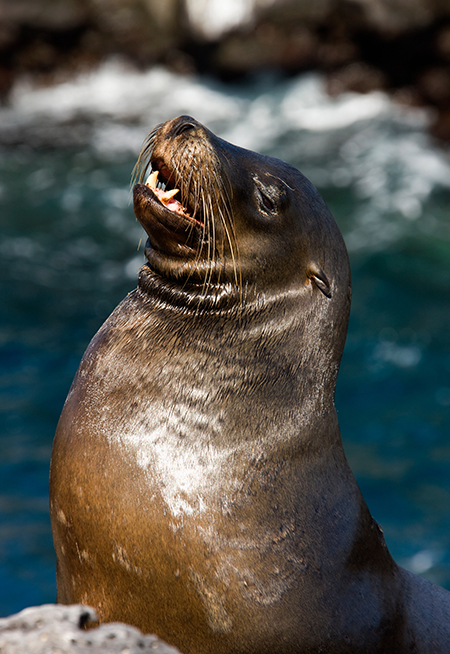
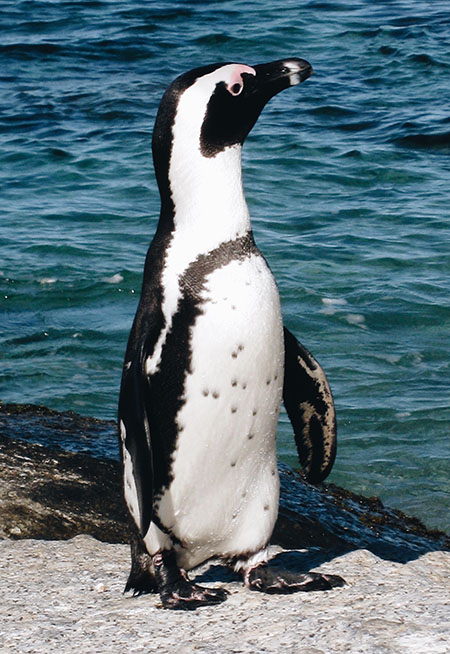
While Vancouver is not quite cold enough to house the kind of penguins that commonly comes to mind, the Vancouver Aquarium houses African penguins – penguins that are native to the waters of southern Africa and live in above freezing temperatures.
Gabriel reveals that penguins usually huddle to stay warm but they have a rotation system penguins closer to the outside will rotate in and vice-versa. This ensures the entire huddle keeps warm in cold weather.
As one of the most popular animals at the aquarium, if not the most popular, the sea otter exhibit is a must-see! Gabriel describes how these smart and playful creatures learned to use rocks to break open shells so they can feed on the meat.
All the sea otters living at the aquarium are deemed non-releasable by government agencies since they were were rescued as pups and were too young to learn the necessary life skills needed to survive in the wild.
Rest assured, the staff at the Vancouver Aquarium make sure the otters are taken care of and live fulfilling lives.


Our next major stop is the Frogs Forever? exhibit.
Many species of poisonous frogs are brightly coloured to warn predators that they are dangerous but, as Gabriel reveals, some frogs have learned to emulate this colourful warning despite being harmless to predators. Quite the clever adaptation!
The Tropics exhibit is home to beautiful coral reefs and colourful tropical fish. The exhibit also features jellyfish and a shark!
Did you know? Corals, despite their rocky and lifeless appearance, are actually living creatures. Aside from being pretty to look at, coral contributes to ecosystems that are home to over 4000 species of fish and other animals.
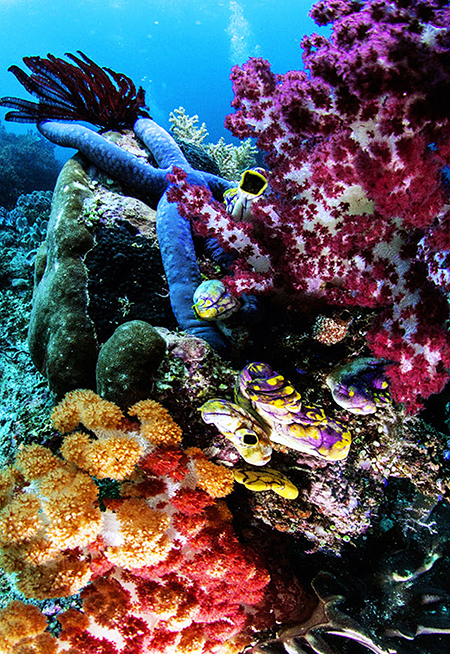
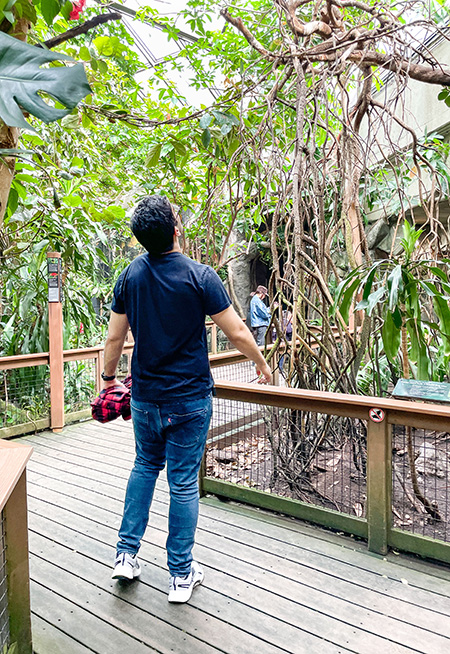
Our last stop is the Graham Amazon Gallery. This special exhibit features a mini amazon rainforest where creatures from the Amazon, such as snakes, sloths, and caimans, are housed.
Gabriel, noticing sloths up in the tree, reveals that sloths are green because of algae and other organisms are growing in its fur. This strange fact also has an additional benefit – due to this unique relationship, sloths are not prone to diseases like cancer or neurodegenerative diseases.
Studies are being done to see what we can learn from this symbiotic relationship.

Since 2020, the Vancouver Aquarium now limits capacity by the hour. The aquarium strongly recommends visitors book tickets in advance for not only the best prices but also to ensure visitors are able to tour the aquarium at their desired time.
| Ticket type | Cost (per person) | Notes |
|---|---|---|
| General Admission (Regular) | $41 – $56 |
|
| General Admission (Child) | $27 – $33 |
|
| Membership | $80 |
|
There are two types of tickets: General Admission tickets and Memberships. General Admission tickets are for single use entry and the pricing varies depending on age discounts and peak hours while memberships allow unlimited entry to the aquarium for one full year.
Memberships are a great choice if you plan on visiting the aquarium at least twice a year. Having a membership not only gives you unlimited access to the aquarium for one year from date of purchase, but also gives you access to discounts and member-only events held throughout the year.
Once you enter the aquarium, there’s no need to rush! Visitors can stay as long as they’d like but typically visitors spend around 90 minutes to two hours to see everything.
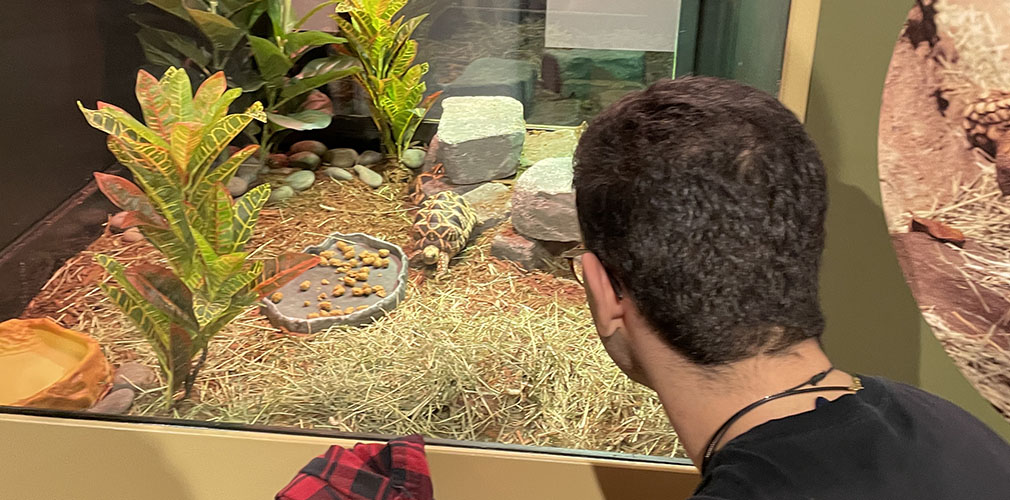
Located within Stanley Park, the Vancouver Aquarium is easily accessible by car or by bus. There are three parking lots located within 10 minutes’ walk from the aquarium.
The Vancouver Aquarium’s address is: 845 Avison Way, Vancouver, BC V6G 3E2
For those who want to take public transportation, the #19 bus stops just five minutes away by foot from the aquarium.
The Vancouver Aquarium is typically open daily from 9:30am – 5:30pm, with last entry being at 3:30pm. You can refer to the calendar on their website for the most up to date information.
Unsure where to go? The Vancouver Aquarium website has a colour-coded map that is also available as a PDF!
The aquarium also has various food and beverage options, such as the Courtyard Café, so visitors don’t have to worry about food or drink while exploring the aquarium.

Once you are finished with your visit, you can stop by the aquarium Gift Shop and browse through the sustainable products made right at home by Canadian artists. The Gift Shop is accessible even to those without a ticket so feel free to drop by any time to shop for aquatic-themed merchandise.
If you happen to forget to grab something after your visit, the Vancouver Aquarium shop is also online so you can order aquatic merchandise from the comfort of your own home.
British Columbia is home to many natural ecosystems from our mountains and forests to our bordering oceans. Vancouver is home to many conservation efforts including the Ocean Wise Conservation Association who creates programs such as the Great Canadian Shoreline Cleanup.
We hope by introducing students to aquatic life and everything else Canada has to offer, we give them the knowledge and curiosity to help preserve these ecosystems for generations to come.
If you’re passionate about marine life like Gabriel, check out our Associate of Science Degree program.
Associate of Science Degree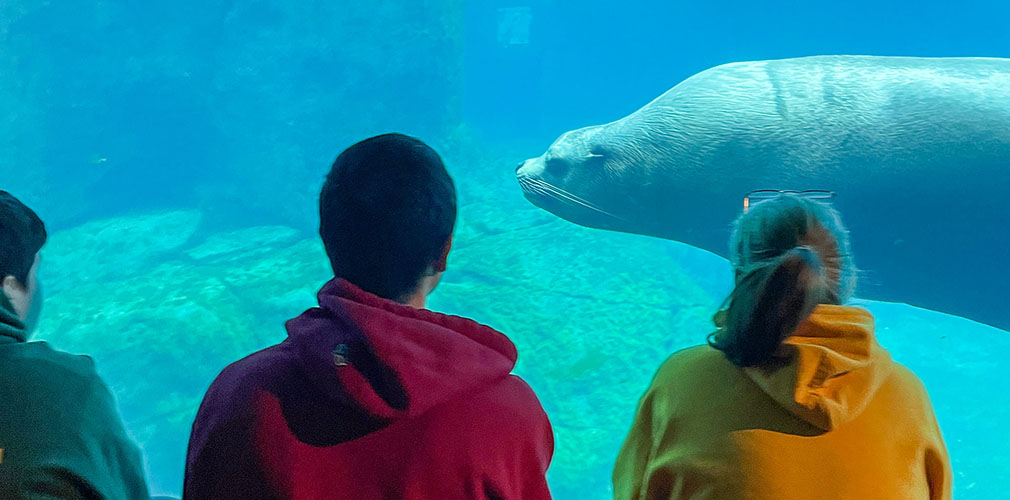
If you’re a current student at AC who loves to explore Vancouver, contact us at social@alexandercollege.ca and you may have a chance to be featured in a future blog and video.
Alexander College acknowledges that the land on which we usually gather is the traditional, ancestral and unceded territory of the Coast Salish peoples, including the territories of the xʷməθkwəy̓əm (Musqueam), Skwxwú7mesh (Squamish), and Səl̓ílwətaʔ/Selilwitulh (Tsleil-Waututh) Nations. We are grateful to have the opportunity to work in this territory.
Alexander College acknowledges that the land on which we usually gather is the traditional, ancestral and unceded territory of the Coast Salish peoples, including the territories of the xʷməθkwəy̓əm (Musqueam), Skwxwú7mesh (Squamish), and Səl̓ílwətaʔ/Selilwitulh (Tsleil-Waututh) Nations. We are grateful to have the opportunity to work in this territory.